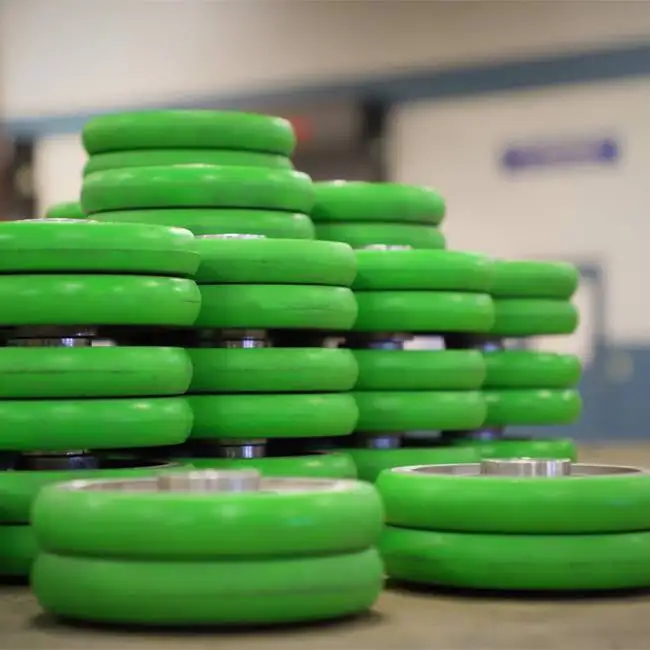

Historically, the manufacture of industrial casters combined forging, casting, stamping, and welding. Forging and casting of casters and wheels have not changed significantly over the past 50 years. Many of the same sizes and shapes of manufactured products in these processes are totally unchanged. The portion of the manufacture of industrial casters that has significantly changed is the fabrication of the caster rig, which is the main body of the caster. In the past the rig was manufactured using stampings of standard components that were welded either to the forgings of the swivel sections or to each other. Accessories such as brakes or toe-guards were fabricated using iron works to modify the design and then were welded to the standard components. Caster Concepts has taken the fabrication to a new level that has revolutionized the improvements in manufacturing casters of the rig by: increasing strength, improving quality, and shortening production time.
These improvements have come from the laser cutting and forming of the rig removing approximately 40% of the welding and dramatically changing the design/build process.
In the production of heavy duty casters the platform that the legs are attached to are manufacture in one single flat blank. The blank is ”developed” to accommodate the material that will be consumed at the time the legs are formed. The forming process, using a press brake, moves the leg material so that the legs are in a 90 degree orientation to the platform. In a ”fixturing/welding” process the leg would be welded to the platform in a traditional fashion. The forming process, when complete, makes a part that is 25% stronger than the welded product and cannot fail unless there is total material failure. The laser cutting/forming process totally removed an area of potential failure from the finished product.
When parts are made in a stamping process there is initially a clean failure of the material (approximately half of the thickness of the material) and them the remainder of the material will ”break out” leaving a edge that has variability in the range of 0.03 inches. When a part is laser cut the edge quality and hole (for the axle placement) can be held within 0.002 inches. The most significant impact of this accuracy is in fact with the axle, instead of grinding the hole to a final dimension, the hole is cut initially to an ideal fit which significantly improves the quality of the final product.
When designed properly the laser cutting/forming process results in a processed part that is closer to the finished product at the time it is cut. The reason for this is all components of the rig are essentially integrated into the original laser blank hence avoiding little or no additional welding. The avoidance of secondary operations will always speed the product through the manufacturing process while controlling additional costs. The engineering staff at Caster Concepts can design heavy duty casters in a fashion that utilizes the most modern of manufacturing processes to maximize the return on your purchase.